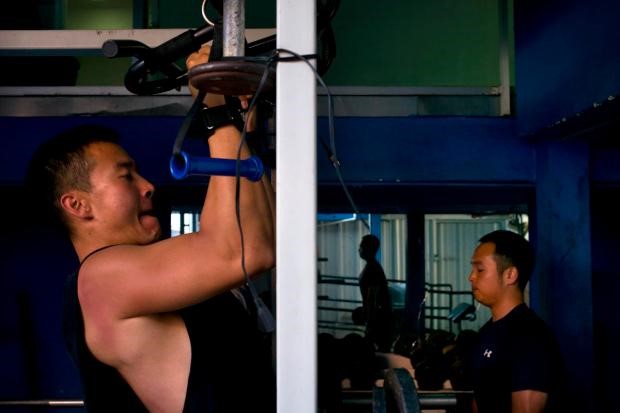Speed Rehab Center Near Me Turnersburg NC
Home
Speed Rehab Center Near Me Turnersburg NC Resources and Information Online
Speed Rehab Center Near Me Turnersburg NC
And the weaker you get, the more you feed into that energy, and the more it fucks with you. However, for those seeking a Free Rehab in Texas for addiction, there are many things that need to be considered. This beachside community offers family therapy, individual treatment, dual-diagnosis treatment, and outpatient services. The only way out of that hopeless state is intervention.†-Robert Downey Jr.
The program involves a thorough recovery that lasts from the first few days to after six months and relapse prevention. These include the Christian Salvation Army Adult Rehabilitation Centers and Harbor Light detox and residential centers, which can be found nationwide, as well as a variety of other rehab centers and organizations dedicated to residential rehabilitation and support based on their specific faith traditions. On offer at these facilities are all recovery services, including detox, experimental therapies, dual diagnosis, and transitional living. Your newfound sobriety is also easier to maintain when you have the power of God and His guidance on your side.
More Info About Lorazepam Addiction Rehab Program

More Details Around Amobarbital Detox Turnersburg NC
Relapse prevention[edit] An influential cognitive-behavioral approach to addiction recovery and therapy has been Alan Marlatt's (1985) Relapse Prevention approach.[34] Marlatt describes four psychosocial processes relevant to the addiction and relapse processes: self-efficacy, outcome expectancies, attributions of causality, and decision-making processes. Treatment includes medication for depression or other disorders, counseling by experts and sharing of experience with other addicts.[1] Contents Psychological dependency[edit] Psychological dependency is addressed in many drug rehabilitation programs by attempting to teach the patient new methods of interacting in a drug-free environment. He died a junkie." "Rock in peace." [...] "He wanted the world and lost his soul. [...] Sold it all for rock and roll.
Right here are Some More Resources on Lorazepam Addiction Rehab Program
In this approach, the client is serviced by provider(s) in his or her home and workplace – for any efficacy, around-the-clock – who functions much like a nanny to guide or control the patient's behavior. Tolerance occurs when a person is no longer affected by the same amount of a drug and needs to take more of it to feel the same effects. To keep best foot forward for our residents, continuing care is coordinated for each client to ease transition back into a home environment, with support in place for a continued 12-step effort. The centers that are not outpatient are called inpatient and that is when the patient resides at the rehab center to receive the necessary treatments for their addictions.
More Info Around Amobarbital Detox Turnersburg NC
In an inpatient drug rehab, you also have access to caring staff 24 hours a day, something that’s impossible with other treatment methods. Friends and family: The loved ones of those who are addicted to drugs or alcohol often want to help but aren’t always sure how to bring it up. The Rehab Process Stopping current drug use is not the only goal of rehab. If you’re worried that a friend or loved one might be abusing drugs, look for the following warning signs: Physical warning signs of drug abuse or addiction Bloodshot eyes, pupils larger or smaller than usual Changes in appetite or sleep patterns Sudden weight loss or weight gain Deterioration of physical appearance, personal grooming habits Unusual smells on breath, body, or clothing Tremors, slurred speech, or impaired coordination Behavioral warning signs of drug abuse or addiction Drop in attendance and performance at work or school Unexplained financial problems; borrowing or stealing Engaging in secretive or suspicious behaviors Sudden change in friends, favorite hangouts, and hobbies Frequently getting into trouble (fights, accidents, illegal activities) Psychological warning signs of drug abuse or addiction Unexplained change in personality or attitude Sudden mood swings, irritability, or angry outbursts Periods of unusual hyperactivity, agitation, or giddiness Lack of motivation; appears lethargic or "spaced out" Appears fearful, anxious, or paranoid Warning signs of commonly abused drugs Marijuana: Glassy, red eyes; loud talking, inappropriate laughter followed by sleepiness; loss of interest, motivation; weight gain or loss. Paying for drug rehab Private insurance, state vouchers, or Medicaid are accepted by many rehab programs to make rehab affordable. Other facilities have a gender-specific focus or specialize in specific behavioral addictions.
Click Here for More Information
Previous Next
You may also like:
Amphetamine Detox Program Cable OH
Peyote Addiction Clinic Warwick GA
Soma Addiction Rehab Center Cassopolis MI
Funding For Drug Rehab Programs New Ross IN
Nembutal Addiction Clinics Olton TX
Butorphanol Rehab Treatment Facilities East Hebron NH
Sublimaze Rehab Hospital Near Me Wright City MO
Tramal Rehab Centers Ashippun WI
Phenobarbital Detox Treatment Facilities Fingal ND
Endocet Detox Near Me Paulding MS
Vicodin Addiction Detox Centers Bath SC
Private Rehabilitation Providers O Brien FL
Duodin Detox Centers Pomeroy WA
Hydromorphone Addiction Rehab Clinic Manzanola CO
Adderall Detox Treatment Center New London TX
Vicodin Addiction Detox Center Joppa IL
Dexedrine Abuse Treatment Facilities Auburn IN
Opium Addiction Detox Programs Macedon NY
Sublimaze Abuse Treatment Facilities Maybeury WV
Amytal Rehab Center Plum City WI